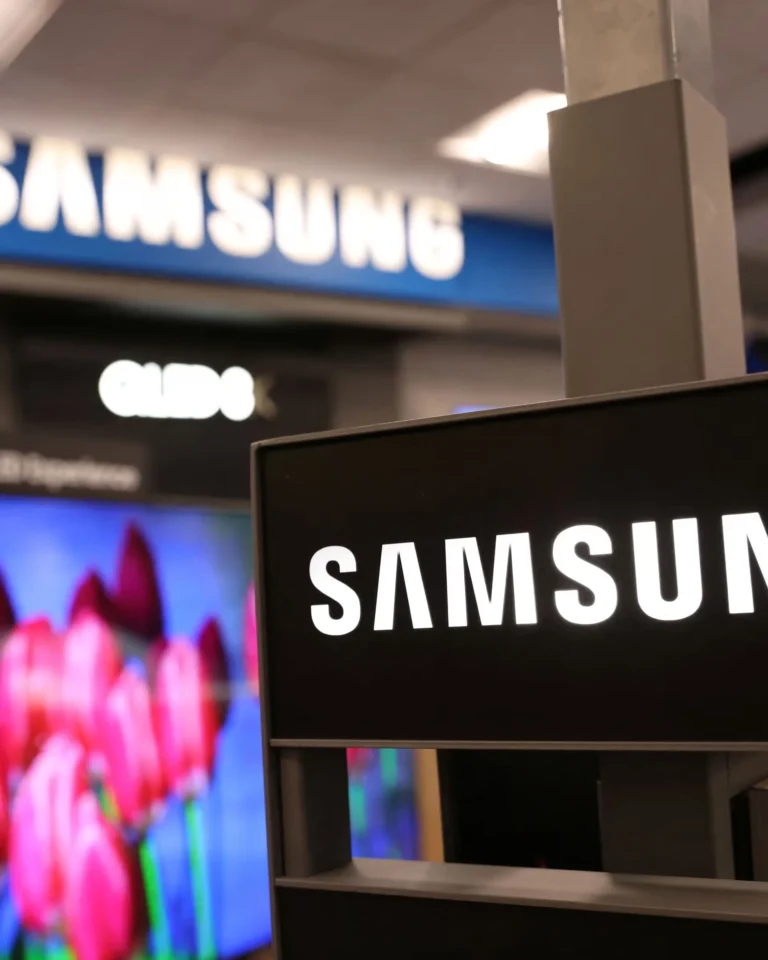A Comprehensive Guide to the World of Hearing Aids: Welcome to the fascinating world of hearing aids, where cutting-edge technology meets the power to transform lives. Whether you or a loved one are experiencing hearing loss, understanding how these remarkable devices work and the benefits they offer is crucial. From improving communication and enhancing quality of life to even potentially preventing early death, wearing hearing aids can make a tremendous difference.
Table of Contents
A Comprehensive Guide to the World of Hearing Aids, we will take you on a journey through everything you need to know about hearing aids. We’ll delve into the different types available, explore traditional versus digital options, and highlight key factors to consider when choosing the perfect fit for your needs.
But it doesn’t stop there! We’ll also address common concerns and misconceptions surrounding hearing aids while providing valuable tips on maintenance and care. Plus, we’ll reveal some exciting alternatives that may pique your interest.
So grab a cup of coffee (or tea!) as we embark on this enlightening exploration into the ever-evolving world of hearing aid technology. Get ready to discover how wearing these small yet powerful devices can open up an entire realm of sound – enriching your life in ways you never thought possible!
Understanding Hearing Loss
Hearing loss is a common condition that affects millions of people worldwide, yet it can be misunderstood or overlooked. It’s important to grasp the various factors that contribute to hearing loss and how it can impact individuals in different ways.
One primary cause of hearing loss is age-related degeneration, known as presbycusis. As we grow older, the delicate structures within our ears may become less responsive and lose their ability to transmit sound effectively. This gradual decline in hearing sensitivity often begins around middle age but can manifest differently for each person.
In addition to age-related factors, exposure to loud noises over time can also lead to hearing loss. From attending concerts and sporting events to working in noisy environments without proper protection, prolonged exposure above safe decibel levels can damage the sensitive hair cells within the inner ear.
Certain medical conditions and genetic factors can contribute to hearing loss as well. Conditions such as otosclerosis (abnormal bone growth) or Meniere’s disease (affecting fluid balance in the inner ear) may disrupt normal auditory function.
Understanding the causes of hearing loss is just one piece of the puzzle; recognizing its impact on daily life is equally crucial. Hearing difficulties can result in social isolation, strained relationships, reduced job performance, and even psychological distress. Difficulties with communication make simple interactions challenging – from following conversations in noisy environments to participating fully in group settings or enjoying music.
By gaining a deeper understanding of hearing loss and its implications, we empower ourselves with knowledge that leads us toward seeking appropriate solutions such as wearing hearing aids tailored specifically for our individual needs.
Types of Hearing Aids
When it comes to hearing aids, there are various options available to suit different types and degrees of hearing loss. Let’s explore some of the most common types:
Behind-the-Ear (BTE) Hearing Aids: As the name suggests, these devices rest comfortably behind the ear and are connected to a custom-molded earmold or earpiece that fits inside the ear canal. BTE aids are suitable for all ages and offer powerful amplification.
In-the-Ear (ITE) Hearing Aids: These devices fit entirely within the outer ear and come in two styles – full shell and half shell. Full shell ITE aids fill up most of the bowl-shaped area, while half shell ITE aids sit partially inside the bowl-shaped area.
Receiver-in-Canal (RIC) Hearing Aids: RIC hearing aids have a small casing that sits discreetly behind the ear, with a thin wire connecting it to an open-fit receiver placed directly in your ear canal. This design allows for natural sound quality while minimizing visibility.
Completely-in-Canal (CIC) Hearing Aids: CIC devices are custom-made to fit deep within your ear canal, making them virtually invisible when worn. They provide excellent sound quality but may not be suitable for individuals with severe hearing loss or dexterity issues.
Invisible-in-Canal (IIC) Hearing Aids: IIC hearing aids are similar to CIC models but designed to sit even deeper in your ear canal, making them nearly invisible from any angle.
Lyric Extended Wear Devices: Unlike traditional hearing aids that require daily removal and maintenance, Lyric is a completely invisible device inserted deep into your ear canal by a professional audiologist where it can remain comfortably for months at a time.
Remember that each type of aid has its own advantages and limitations depending on factors such as lifestyle, hearing needs, and personal preferences. It is crucial to consult with a hearing
Traditional vs. Digital Hearing Aids
When it comes to hearing aids, there are two main types: traditional and digital. Traditional hearing aids have been around for decades and are known for their reliability. These devices amplify sound using analog technology, which means they convert sound waves into electrical signals that can be adjusted to match your specific hearing needs.
On the other hand, digital hearing aids utilize advanced technology to provide a more customized listening experience. They use tiny microphones and computer chips to process sound digitally, allowing for greater precision in amplification. With digital technology, these devices can analyze incoming sounds and automatically adjust settings based on your environment.
One of the key advantages of digital hearing aids is their ability to filter out background noise, making it easier for users to focus on speech or other important sounds. Additionally, many digital models offer features like Bluetooth connectivity and rechargeable batteries, adding convenience and versatility.
However, it’s important to note that traditional hearing aids still have their merits. Some individuals find them simpler to use and appreciate their durability compared to more complex digital options. Traditional models may also be more cost-effective for those with budget constraints.
The choice between traditional and digital hearing aids depends on individual preferences and needs. It’s recommended that you consult with an audiologist who can evaluate your specific situation before making a decision.
Factors to Consider When Choosing a Hearing Aid
When it comes to selecting the right hearing aid, there are several factors that you need to consider. Each person’s hearing loss is unique, and what works for one individual may not work for another. Here are some key considerations to keep in mind:
Degree of Hearing Loss: The severity of your hearing loss will play a crucial role in determining the type and power of the hearing aid you need.
Lifestyle and Personal Preferences: Think about your daily activities and environments where you struggle with hearing. Are you frequently in noisy settings? Do you enjoy outdoor activities or socializing at restaurants? Understanding your lifestyle will help guide your choice.
Technology Features: Modern digital hearing aids come with various features such as noise reduction, directional microphones, Bluetooth connectivity, and rechargeable batteries. Consider which features are essential for improving your listening experience.
Comfort and Fit: A properly fitted hearing aid is essential for both comfort and optimal performance. It should fit snugly without causing discomfort or irritation.
Budget: Hearing aids vary greatly in price depending on their technology level and additional features they offer. Set a realistic budget that aligns with your needs.
Trial Periods and Warranties: Look for manufacturers who provide trial periods or return policies so that you can test out the device before committing to it fully.
By considering these factors when choosing a hearing aid, you can make an informed decision that suits both your lifestyle and specific needs! So take the time to research different options consult with an audiologist who can guide you towards finding the perfect solution for better hearing health!
The Importance of Proper Fitting and Adjustments
Proper fitting and adjustments are crucial when it comes to getting the most out of your hearing aids. Just like a pair of shoes, if they don’t fit properly, you won’t be comfortable or able to fully benefit from them.
When you first get your hearing aids, it’s important to have them fitted by a qualified audiologist or hearing care professional. They will take detailed measurements and impressions of your ears to ensure a custom fit. This is essential because everyone’s ear shape and size are different.
Once you have been fitted with your hearing aids, the next step is making adjustments based on your individual needs and preferences. Your audiologist will work closely with you to fine-tune the settings so that sounds are clear and comfortable for you.
It’s worth noting that as time goes on, your hearing needs may change. Regular follow-up appointments with your audiologist are necessary for ongoing adjustments and any necessary repairs or maintenance.
By ensuring proper fitting and regular adjustments, you can optimize the performance of your hearing aids and improve your overall satisfaction with them. Don’t underestimate the importance of this step in achieving optimal communication abilities!
Common Concerns and Misconceptions about Hearing Aids
Misinformation can often lead to unnecessary concerns and misconceptions when it comes to hearing aids. Let’s address some of the most common ones to help dispel any doubts you may have.
“Hearing aids are only for old people.”
Contrary to popular belief, hearing loss can affect anyone at any age. Whether it’s due to genetics, noise exposure, or other factors, wearing a hearing aid is not exclusive to older individuals.
“Hearing aids make everything sound too loud.”
Modern hearing aids are equipped with advanced technology that allows for personalized adjustments based on your specific needs. They can amplify sounds selectively, so you don’t have to worry about everything being too loud.
“Wearing hearing aids will make me look old.”
Gone are the days when hearing aids were bulky and unattractive. Today’s devices come in sleek designs and various colors, making them discreet and fashionable accessories rather than signs of aging.
“I’ll become dependent on my hearing aids.”
While it is true that wearing a hearing aid improves communication and overall quality of life for those with hearing loss, they do not inhibit your natural ability to hear without them.
“My insurance won’t cover the cost of a hearing aid.”
Many insurance plans now offer coverage for all or part of the cost of a hearing aid purchase or rental. It’s always worth checking with your provider before assuming otherwise.
“Once I get fitted for a pair of hearings aids, I won’t need further adjustments.”
Proper fitting and follow-up appointments are crucial in ensuring optimal performance from your device(s). Your audiologist will continue working closely with you even after initial fittings to fine-tune settings as needed.
It’s essential not only to be aware but also informed about these concerns surrounding the use of hearing aids so that you can make an educated decision. Remember, hearing aids are designed to improve your quality of life by enhancing
Tips for Maintaining and Caring for Your Hearing Aids
Proper maintenance and care are essential to ensure that your hearing aids continue to provide optimal performance. Here are some tips to help you keep your devices in top shape:
Keep them clean: Regularly clean your hearing aids using a soft, dry cloth or a specialized cleaning brush. Avoid using water or other liquids as they can damage the delicate components.
Store them properly: When not in use, store your hearing aids in a protective case or container to prevent dust, moisture, and accidental damage.
Handle with care: Be gentle when inserting or removing your hearing aids from your ears to avoid dropping them or causing any physical harm.
Avoid exposure to extreme temperatures: High heat or cold can affect the performance of your hearing aids, so try to keep them away from direct sunlight, heaters, or refrigerators.
Replace batteries regularly: If you have traditional hearing aids that rely on disposable batteries, make sure to replace them as needed. Keep spare batteries handy so you don’t run out unexpectedly.
Schedule regular check-ups: Visit your audiologist periodically for professional cleaning and adjustments to ensure that your hearing aid settings are optimized for your specific needs.
By following these simple tips, you can extend the lifespan of your hearing aids and maintain their functionality over time.
Alternatives to Traditional Hearing Aids
For individuals with hearing loss, traditional hearing aids may not always be the best solution. Thankfully, there are alternative options available that can improve communication and enhance overall quality of life.
One popular alternative is the use of assistive listening devices (ALDs). These devices work by amplifying sound in specific environments, such as telephones or public venues. ALDs can be used alongside or instead of traditional hearing aids, depending on individual needs.
Another option is cochlear implants. While typically more invasive than traditional hearing aids, cochlear implants bypass damaged parts of the inner ear and stimulate the auditory nerve directly. This technology has proven to be effective for those with severe to profound hearing loss who do not benefit from conventional hearing aids.
Additionally, bone conduction devices offer an alternative solution for certain types of hearing loss. These devices transmit sound vibrations through the bones in the skull directly to the inner ear, bypassing any damage in the outer or middle ear.
Some individuals may find success with auditory training programs or speech therapy techniques designed to improve listening skills and communication abilities without relying solely on external devices.
It’s important to consult with a qualified audiologist who can assess your specific needs and recommend the most suitable alternatives based on your individual circumstances. Remember that what works for one person may not work for another – finding the right solution requires personalized evaluation and expert guidance.
By exploring these alternative options alongside traditional hearing aids, you can increase your chances of finding a solution that fits seamlessly into your lifestyle while improving your ability to hear and connect with others.
The Future of Hearing Aid Technology
The field of hearing aid technology is constantly evolving, with advancements being made to improve the quality and functionality of these devices. In the future, we can expect even more innovative features that will revolutionize the way people with hearing loss experience the world around them.
One exciting area of development in hearing aid technology is connectivity. Currently, many modern hearing aids offer wireless connectivity to smartphones and other devices, allowing users to stream audio directly into their ears. However, in the future, we can anticipate even greater integration between hearing aids and various technologies. Imagine being able to connect your hearing aids to smart home systems or virtual reality headsets for a truly immersive auditory experience.
Another area that holds great promise is artificial intelligence (AI). AI has already been incorporated into some current models of hearing aids, enabling them to automatically adapt and adjust settings based on individual listening environments. In the future, AI could play an even larger role in personalizing sound amplification and improving speech recognition capabilities.
Miniaturization is another trend we can expect in the future of hearing aid technology. As devices become smaller and more discreet, wearing a hearing aid may become virtually indistinguishable from wearing earbuds or headphones. This advancement will not only benefit those who desire aesthetic appeal but also enhance comfort for long-term wear.
Battery life continues to be an important consideration for users of hearing aids. Many current models feature rechargeable batteries that provide several days’ worth of power before needing recharging. However, ongoing research aims to develop longer-lasting batteries or alternative power sources such as energy-harvesting technologies that could eliminate the need for regular charging altogether.
In conclusion,the future looks incredibly promising for individuals with hearing loss as advancements continue to push boundaries in terms of performance and convenience within the realm of hearing aid technology. With improved connectivity options, enhanced artificial intelligence capabilities and miniaturization efforts,it’s clear that there are exciting times ahead for those seeking better hearing experiences. As research and development continue to progress, we can expect even more
Conclusion: A Comprehensive Guide to the World of Hearing Aids
Understanding hearing loss and the available options for treatment is crucial for individuals who are experiencing difficulties with their hearing. Hearing aids have come a long way in terms of technology and design, offering a wide range of features to improve the quality of life for those with hearing impairments.
When choosing a hearing aid, it’s important to consider factors such as your specific type and degree of hearing loss, lifestyle needs, budget constraints, and personal preferences. Working closely with an audiologist or hearing care professional can help ensure that you find the right fit for your unique circumstances.
Proper fitting and adjustments are essential in maximizing the benefits of wearing a hearing aid. Regular check-ups with your audiologist will allow them to fine-tune the settings based on your feedback and address any concerns or issues that may arise.
While there may be common concerns or misconceptions about wearing hearing aids, it’s important to understand that these devices have proven to be effective in improving communication abilities and overall well-being. With proper maintenance and care, they can provide many years of reliable service.
For those who may not be suitable candidates for traditional hearing aids or prefer alternative options, there are alternatives such as assistive listening devices (ALDs), cochlear implants, bone conduction implants, and even smartphone apps designed specifically for amplifying sound.
The future of hearing aid technology holds great promise. Advancements continue to be made in areas such as connectivity features (allowing seamless integration with smartphones and other devices), miniaturization (making them more discreet), noise reduction algorithms (improving speech clarity in noisy environments), rechargeable batteries (eliminating the need for frequent battery changes), and artificial intelligence-based enhancements.
Whether you choose traditional or digital hearing aids or explore alternative options depends on your individual needs and preferences. The most important thing is to seek professional guidance from an audiologist or qualified healthcare provider who can guide you through the process and help you find the best solution for your hearing needs.







